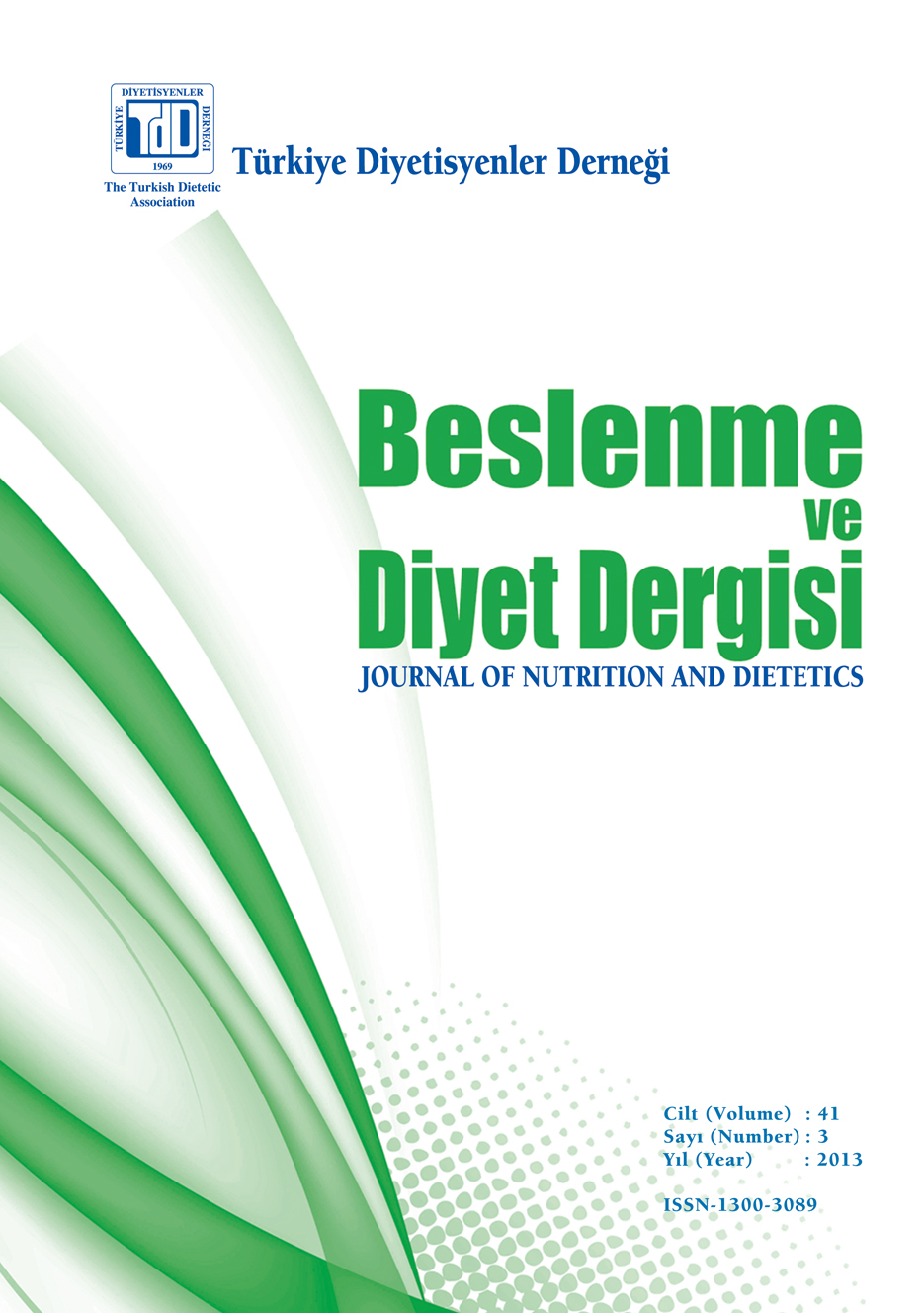Evaluation of Adolescent Swimmers’ Fluid Losses During Training
Keywords:
Adolescence swimmer, dehydration, urine specific gravity, body weight changesAbstract
Aim: To assess pre- and post-exercise hydration status in adolescence swimmers. Subjects and Methods: Seventeen swimmers who were the athletes of Ankara University Sports Club Swimmer Team, participated to the study. Hydration status of athletes were evaluated via urine density and total changes in body weight. Hydration status of athletes was assessed via urine specific gravity (USG) by urine strip and evaluated according to American College of Sports Medicine (ACSM) classification: below 1.020 g/cm3 was evaluated as hydrated and above 1020 g/cm3 as dehydrated. Some anthropometric measurements such as; weight, height, triceps skinfold thickness and body fat percentages were evaluated. Results: According to USG values, all of athletes were hydrated (USG ≤1.020 g/cm3) before exercise, but 6 of 17 of the swimmers were found as dehydrated (USG >1.020 g/cm3) after exercise. Before and after the training differences of urine density were found statistically different in women athletes (p<0.05) but not in men. Furthermore, 47% of the swimmers were dehydrated after the exercise sessions, according to weight changes. The mean dehydration percentage of athletes was 1.5±1.1%. Dehydration percentage of women athletes was higher than men athletes after exercise. Average body weight loss of athletes was 1.5±1.1% during training and rehydration was not occurred. A decline in performance could be seen when the age of the athletes were considered. Although the athletes were trained by their coaches, 47% of the athletes were found dehydrated. This situation expose that documental hydration protocol is a necessity. Conclusion: Families and coaches must take responsibilities in motivating the adolescent swimmers for gaining behavior of adequate fluid intake and appropriate hydration, during and after exercise bouts.

